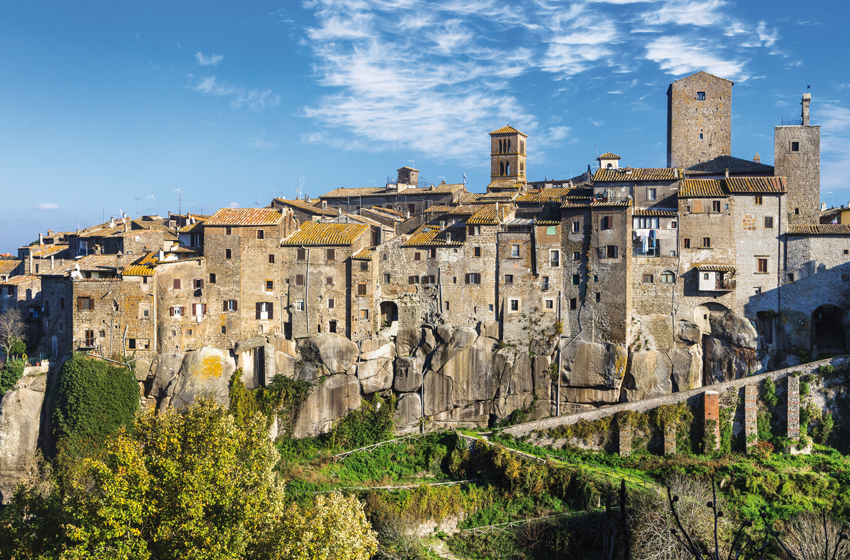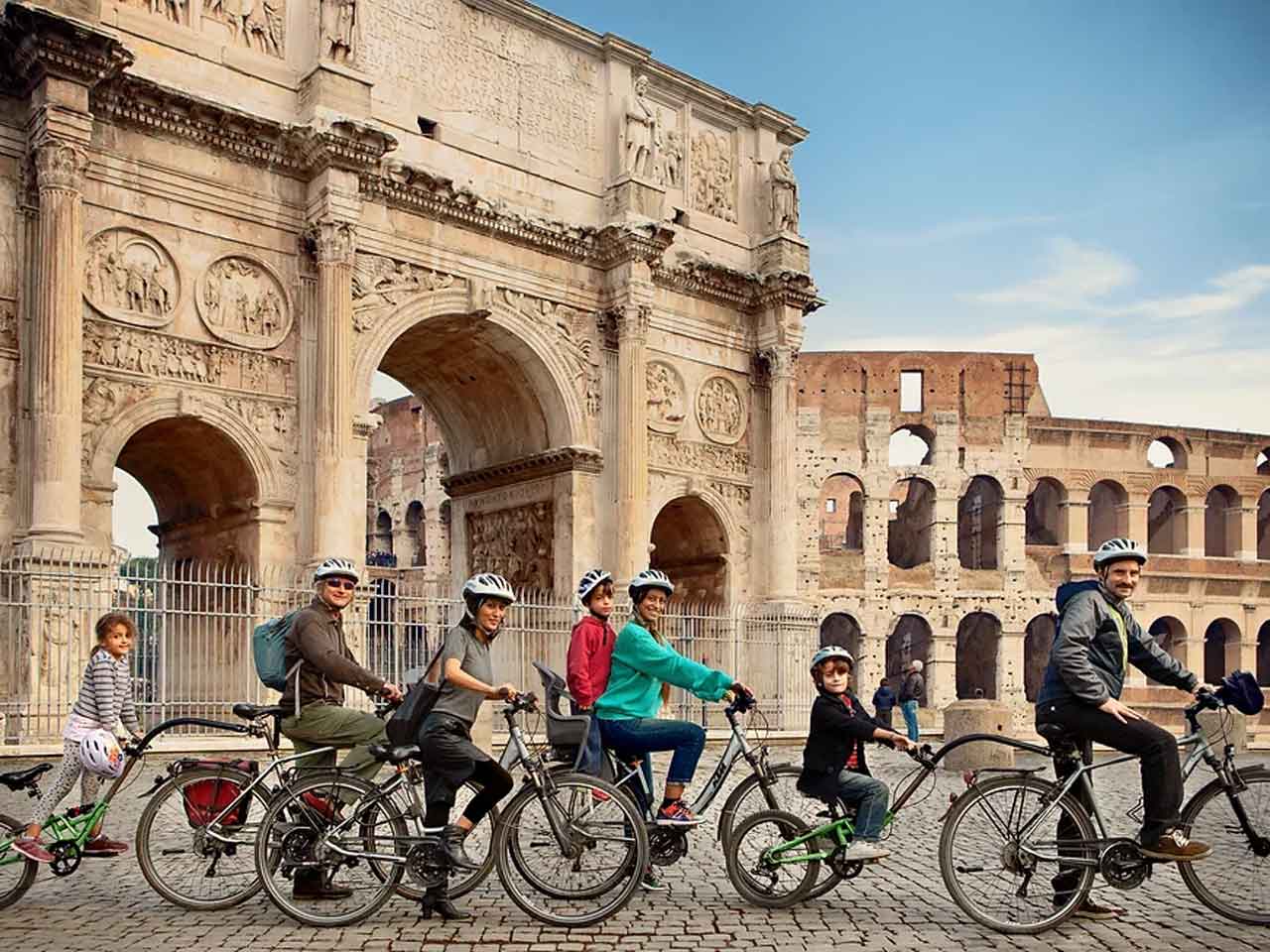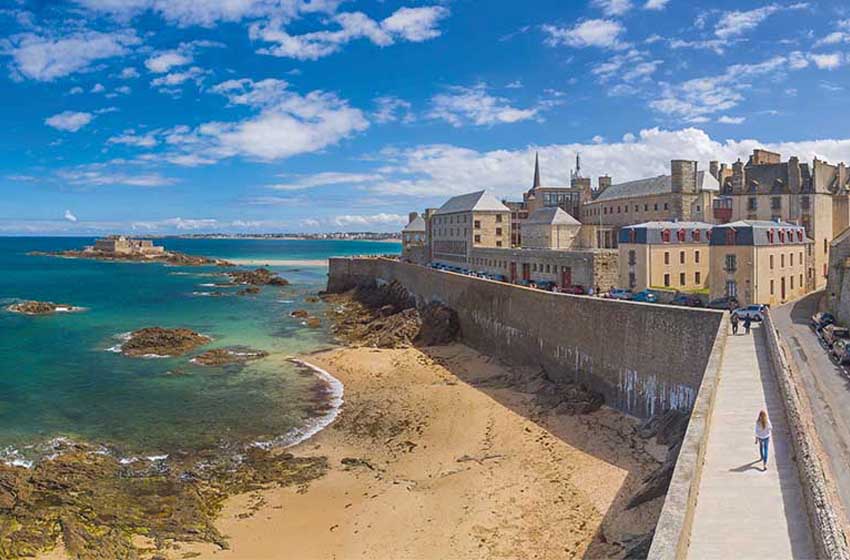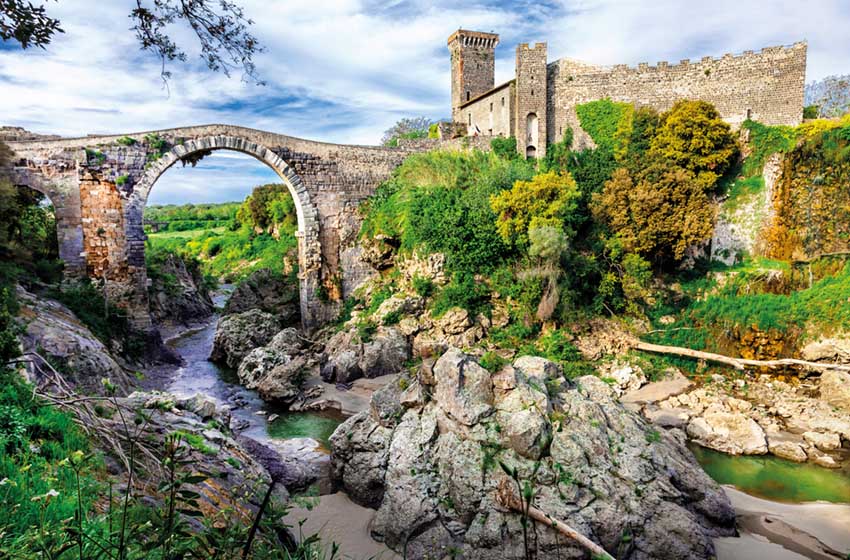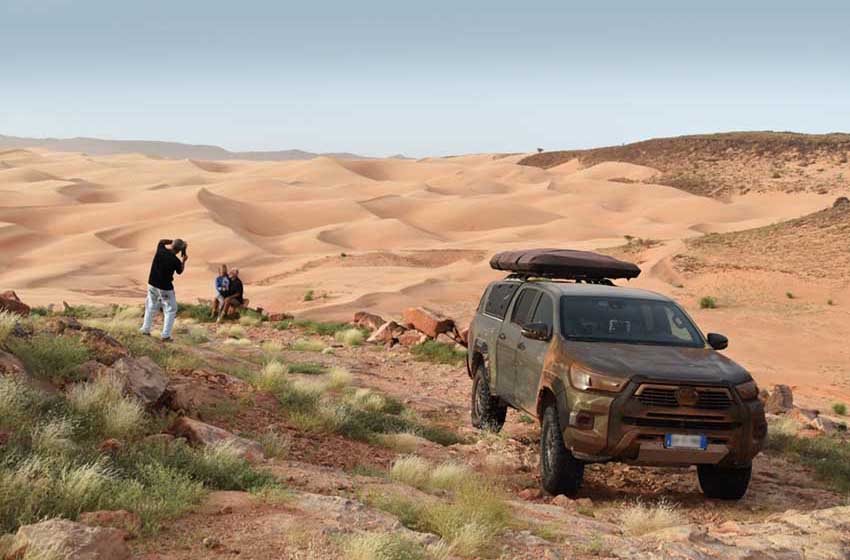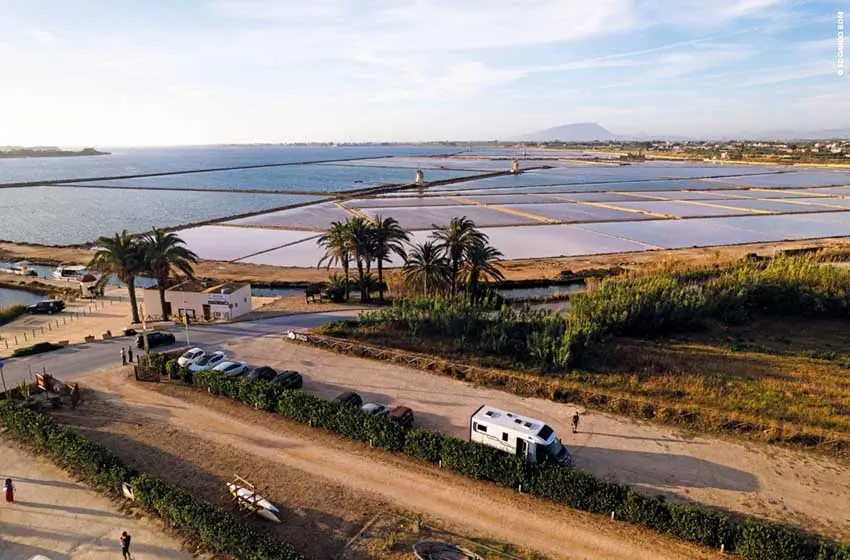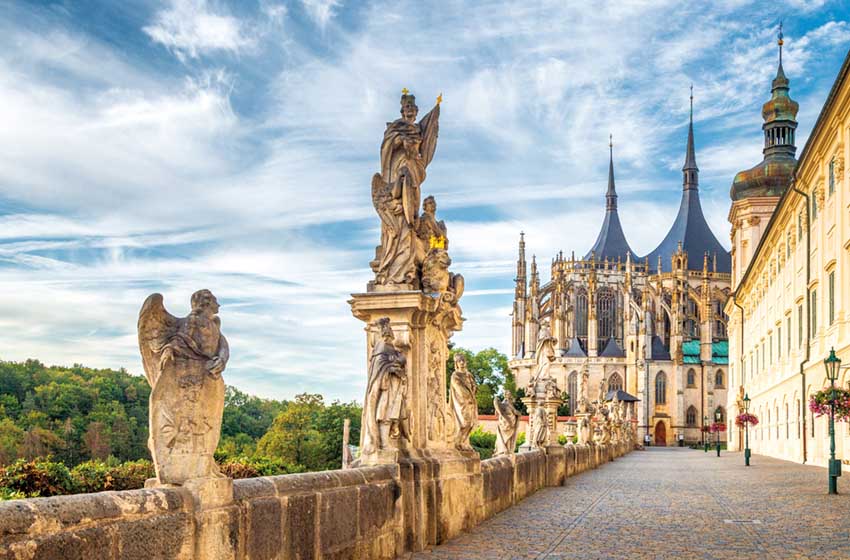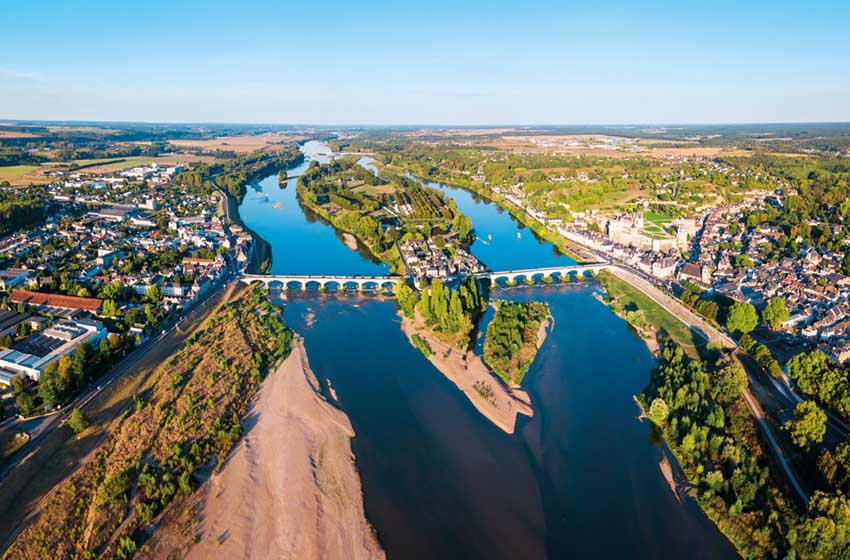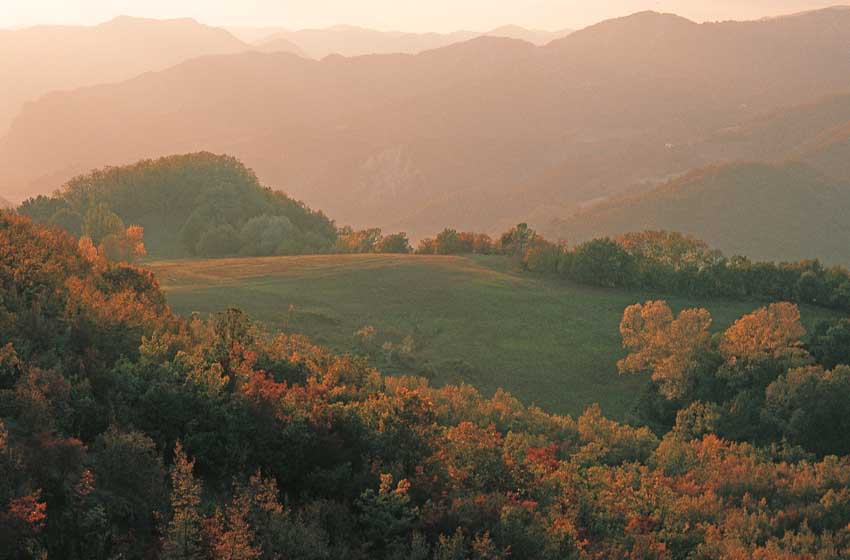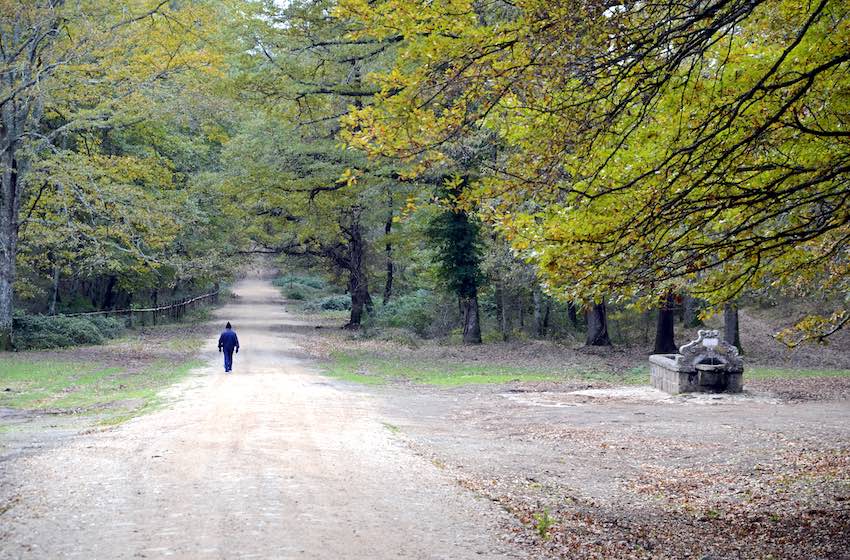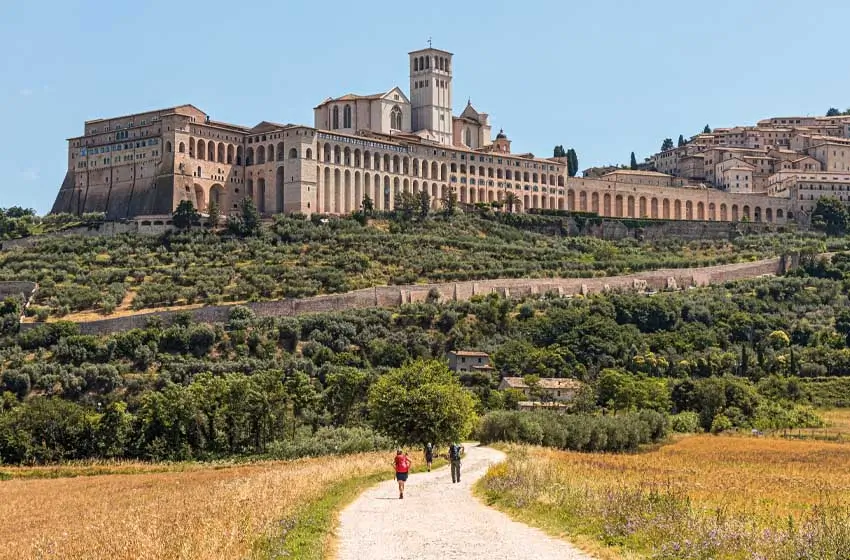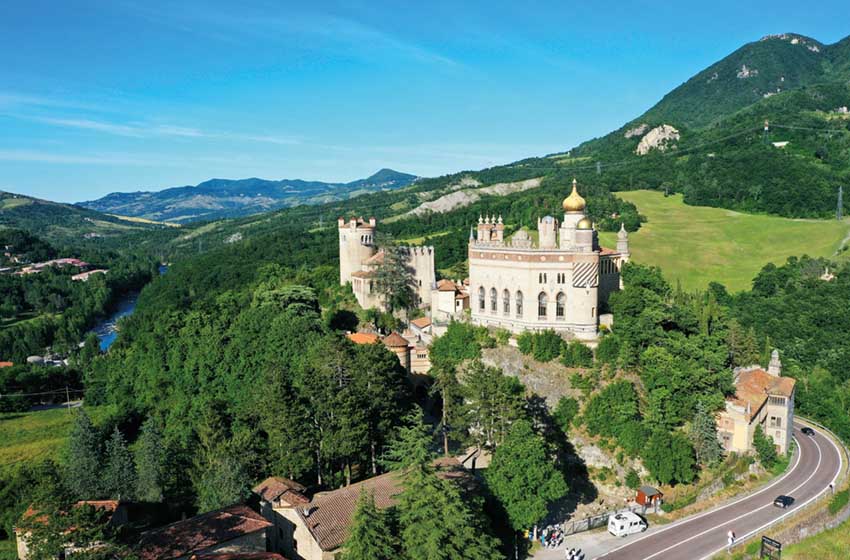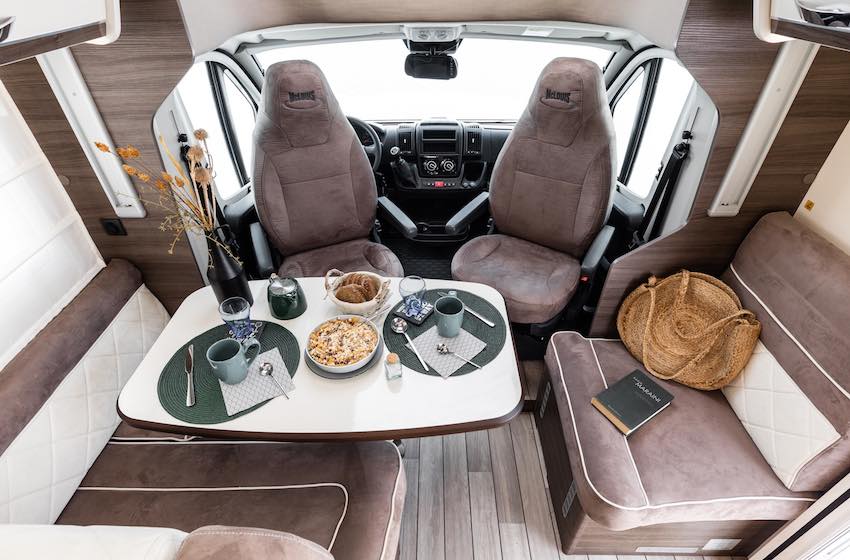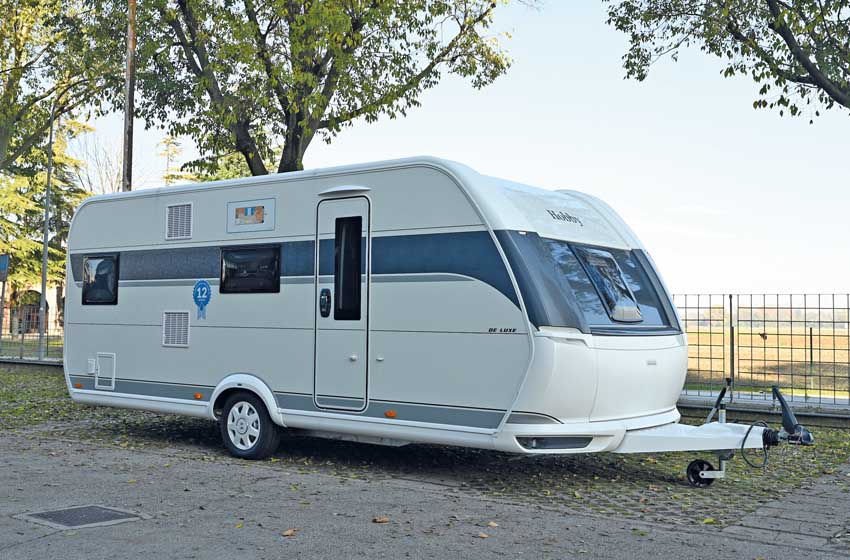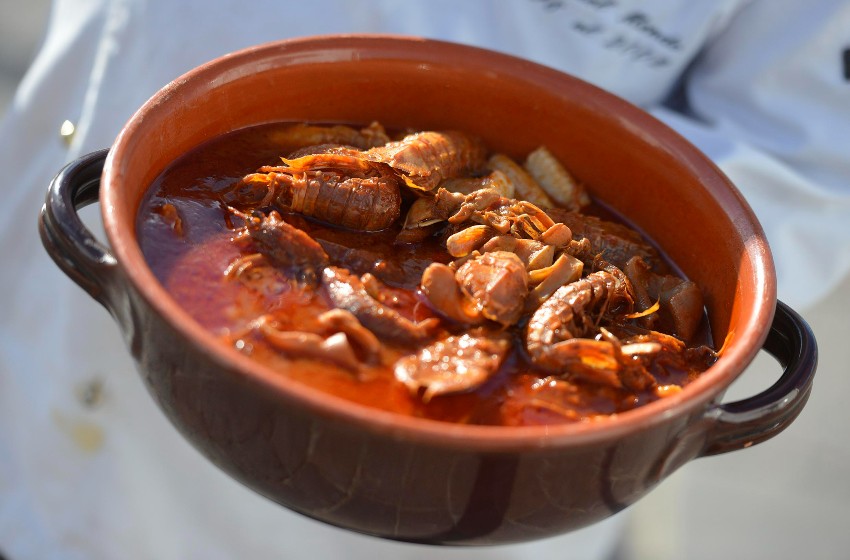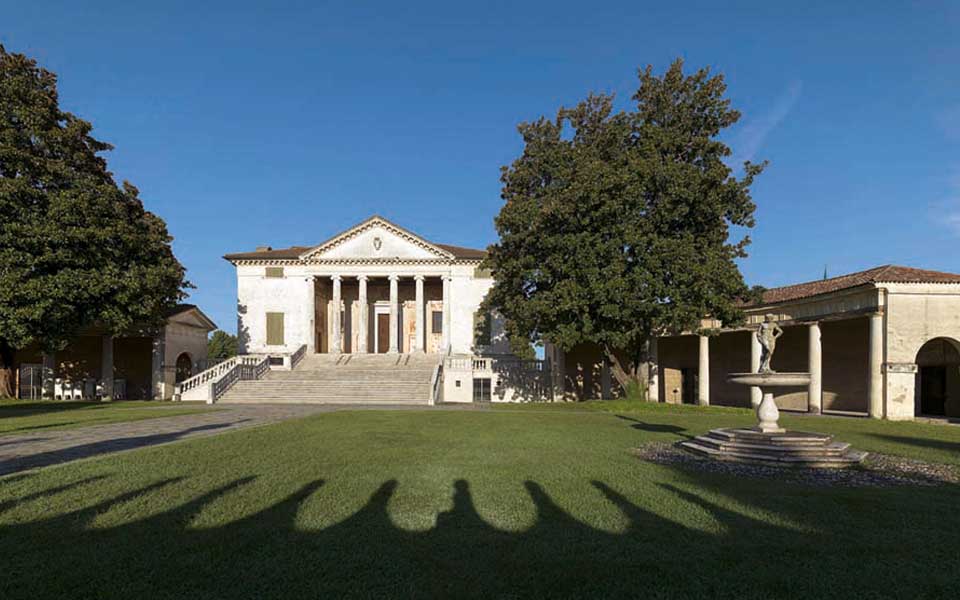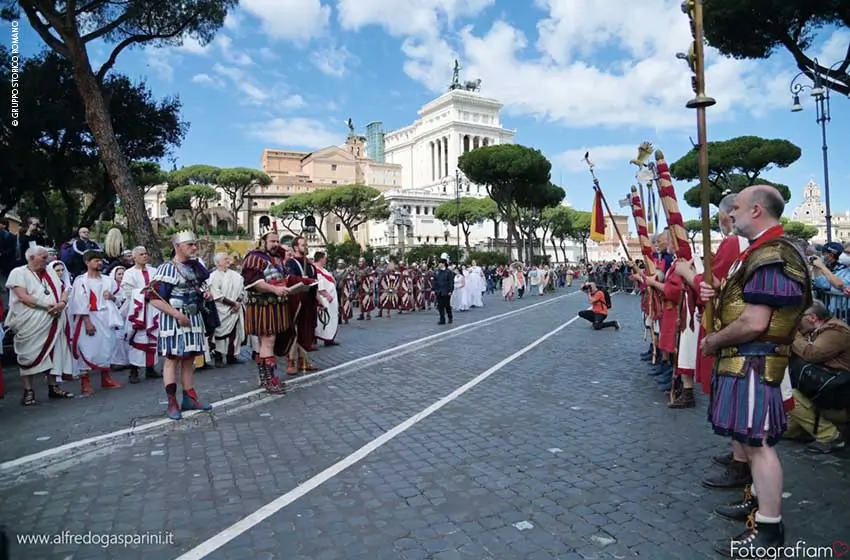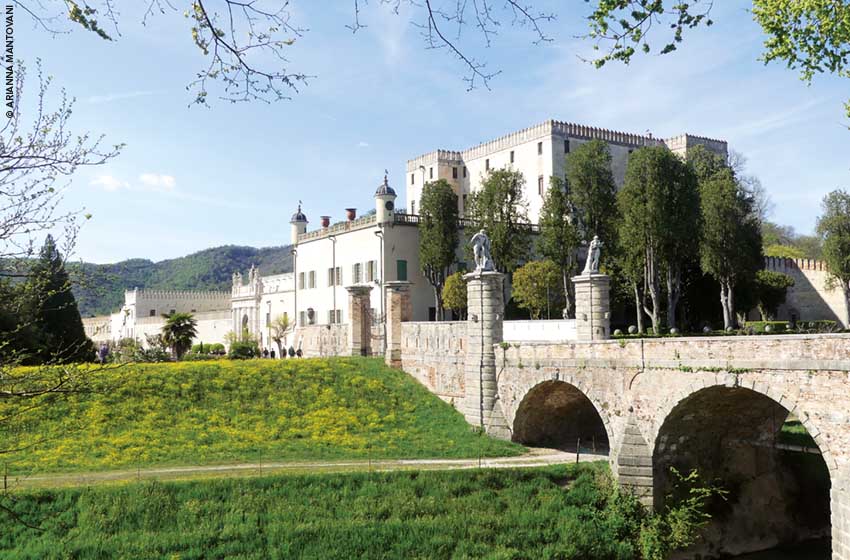A young Vittorio Gassman arrives on horseback under the peperino cliff on which the houses, towers and bell towers of the village suspended over the gorge rest. The scene is among the first in the film The Brancaleone Army by Mario Monicelli filmed in 1966 in various locations in the Tuscia area of Viterbo. Vitorchiano's profile is well recognizable in the film; the knight arrives from Norcia with his men, wanders around the deserted city holding the animal by the bridle and incites his men: «Take what you find!». When a woman informs him that the plague has exterminated almost all the inhabitants, the leader gathers the soldiers and runs away. It's impossible not to notice the proffered stairs that run along the facades of the houses: who knows if the director chose the Viterbo villages as the film's set due to this architectural feature that was widely used in these parts in the Middle Ages.
Forre and peperino
Squeezed between Cimini Mountains and the Vezza valley, Vitochiano overlooks from a cliff with sheer walls onto the two waterways that surround it and then join in the Rio Cold Water. Probably founded by the Etruscans, the ancient Vicus Orchianus was a faithful ally of Rome, as demonstrated by the symbol of the Capitoline she-wolf on the portals and window frames and the writing SPQR on the municipal coat of arms. At every step a touch of elegance: noble palaces, small squares and churches are revealed among the crenellated walls. The most notable is the one dedicated to Santa Maria Assunta in Cielo, which has a gabled façade made of tuff blocks, with a Romanesque flower rose window and two windows at the top.
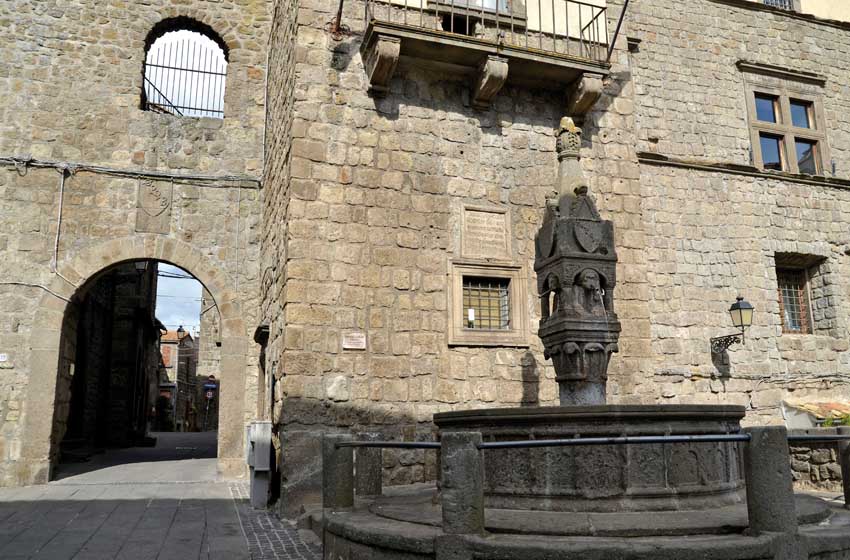
The bell tower stands out for the singular placement of the windows: at the bottom it has single-lancet openings, at the higher levels it has an order of double-lancet windows and an order of triple-lancet windows. At its base is the secondary entrance portal to the Gothic style church with a richly decorated tympanum. Inside it preserves the baptistery and some frescoes believed to be of fourteenth-century origin.
Su Piazza Roma overlooks the Town Hall next to the Clock tower: from the wrought iron balcony the mayor spoke to the crowd gathered in the square below. The “spindle” peperino fountain with a column decorated with small arches catches your attention the symbols of the four evangelists from whose mouths water flows: the lion of San Marco, the calf of San Luca, the eagle of San Giovanni and the angel of San Matteo.
The Moai of Rapa Nui
Leaving the town, near the camper area, a stop at the Moai is a must, the imposing sculpture more than six meters high which stands in a square from which you can enjoy a suggestive view of the town. The monument, the result of the twinning between the Municipality and the'Chilean island of Rapa Nui it is the only example in the world outside Easter Island built by eleven Maori of the Atan family. The statue's headgear, composed of two blocks of peperino, the long ears and the tapered fingers with the thumbs slightly pointing upwards adhering to the belly, are striking.

The history of the monolith begins thirty years ago, when news spread that many of these statues were deteriorating. The journalist Mino D'Amato, then host of the television program In Search of the Ark, took the cause to heart: to raise funds for the conservation of the monoliths, he hosted a group of indigenous people from the island in Vitorchiano who built a Moai on the spot using a stone similar to the one used for the Rapa Nui sculptures.
The work was placed in Piazzale Umberto I, immediately arousing great curiosity and interest. In 2007 the sculpture was lent for an exhibition in Sardinia and, upon its return in 2008, found its current location along the Via della Teverina. And we like to think that she was placed there to watch over the village and its inhabitants and is a good omen for the future.
The surroundings of Vitorchiano: a pyramid in the forest
From Vitorchiano along the provincial road Bomarzese-SP20 for about ten kilometers you can reach Bomarzo and the Le Querce farmhouse, where you can park your camper. In the immediate vicinity of the structure, take a fairly easy path, immersed in dense vegetation, which allows you to reach the Sliced Rocchette.

One cannot contain one's amazement when, suddenly, one finds oneself in the presence of a megalithic construction which, due to its shapes, recalls the pyramids of Mesoamerican civilisations. Carved in a block of peperino fallen from the cliff above, this creation is probably of Etruscan origin, although its dating has not yet been clarified: the mystery that surrounds it is an integral part of the charm of a place where the magic of nature mixes with the suggestions of disappeared civilizations. You return to the starting point crossing the western side where you can admire an underground house.
A scary weekend
It was November 10, 1938 when Salvador Dalí visited the Sacred Forest of Bomarzo created by Pier Francesco Orsini, known as Vicino, starting from the mid-16th century. The Park of Monsters, named after the large statues carved in peperino which portray deformed and frightening creatures, was the inspiration for the Catalan artist for his visionary work The temptation of Saint Anthony. The forest is a bizarre gallery of mysterious characters who fit into the lush vegetation following the shapes of trees, ditches, depressions and hills.
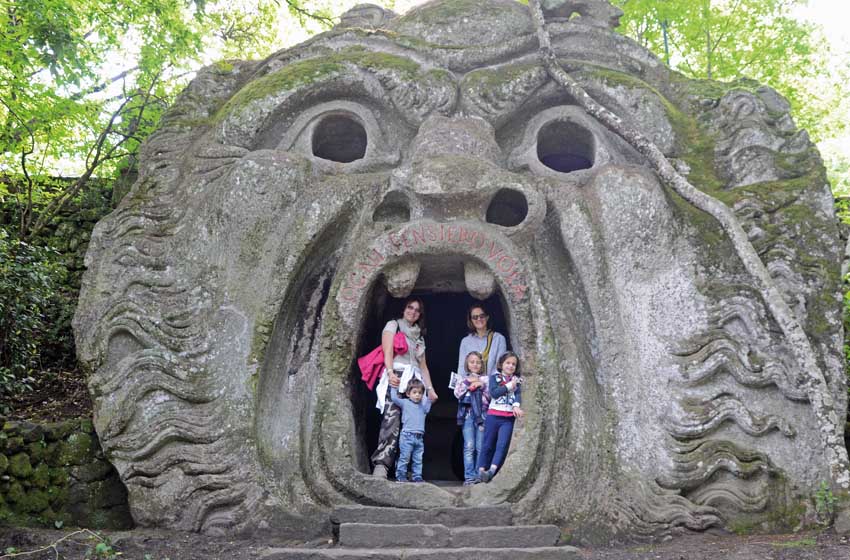
They pop up Dragon fighting with the veltri, the Tartaruga, the enormous face with the mouth wide open (the Mask), Nettuno who rests her bare back against a cyclopean wall and female figures such as Demeter in the opera The Opulent Woman.
However, for a period of time the garden was forgotten and not conserved with dignity. Even the director michelangelo antonioni he became interested in it, struck by its extravagant attractions, and before making his debut in fiction cinema with Cronaca di un amore he made a ten-minute documentary entitled Bomarzo in 1949 which denounced the state of abandonment of the Sacred Forest.
Do you like scary places? Discover the 5 scariest ones chosen by us in Italy!
-------------------------
Are you looking for rest areas in Lazio? Here are those affiliated with the PleinAirClub.
Do you want to discover the peonies of Vitorchiano? Thu find our article.
You can read all PleinAir itineraries on Vitorchiano and Lazio in the digital magazine on your PC, tablet or smartphone. With a year of subscription to PLEINAIR (11 paper issues) you have the available special inserts, the digital magazine e the digital archive since 2015 (with attachments).
With your PleinAir subscription you receive the next issues comfortably at home and savings!

